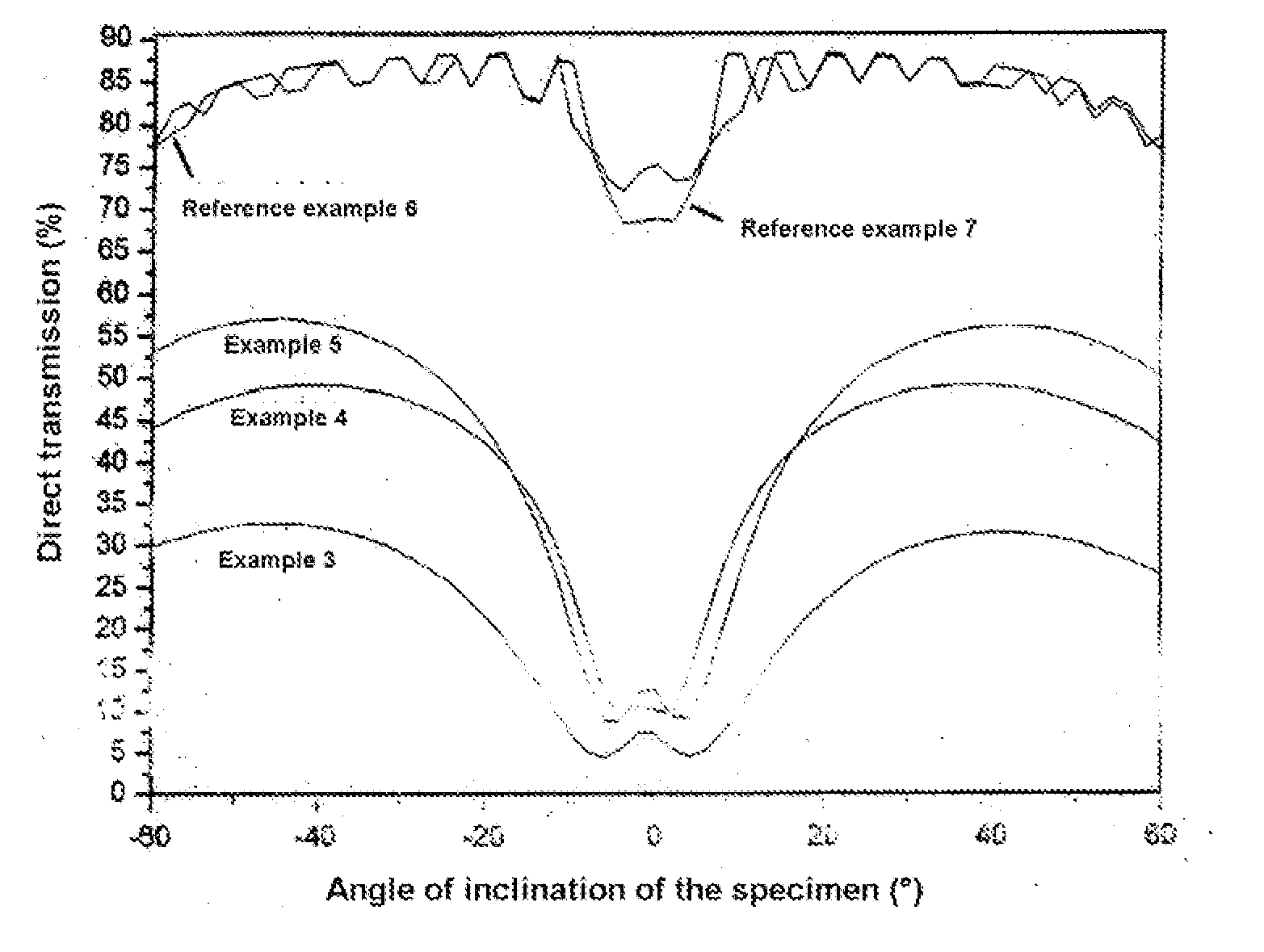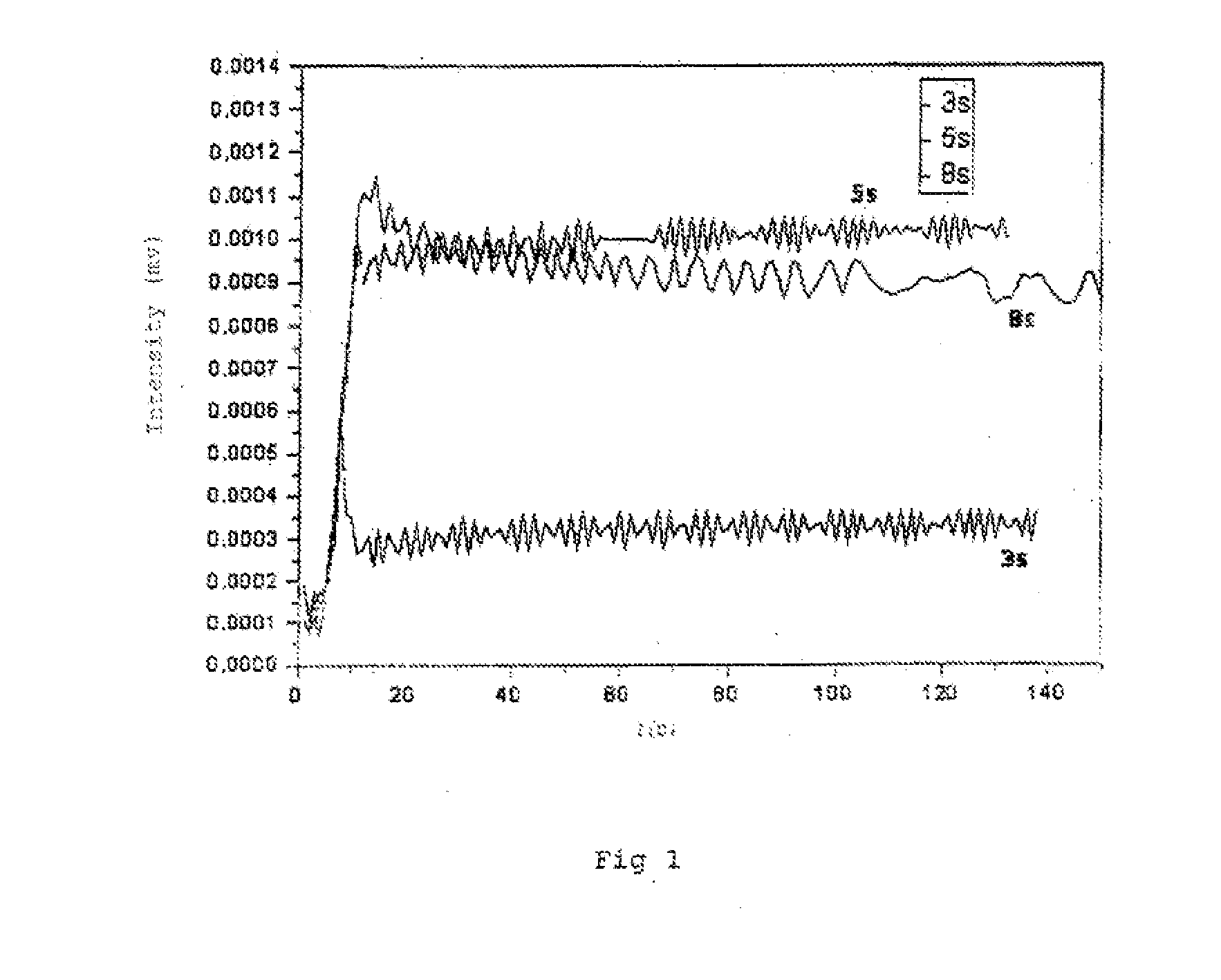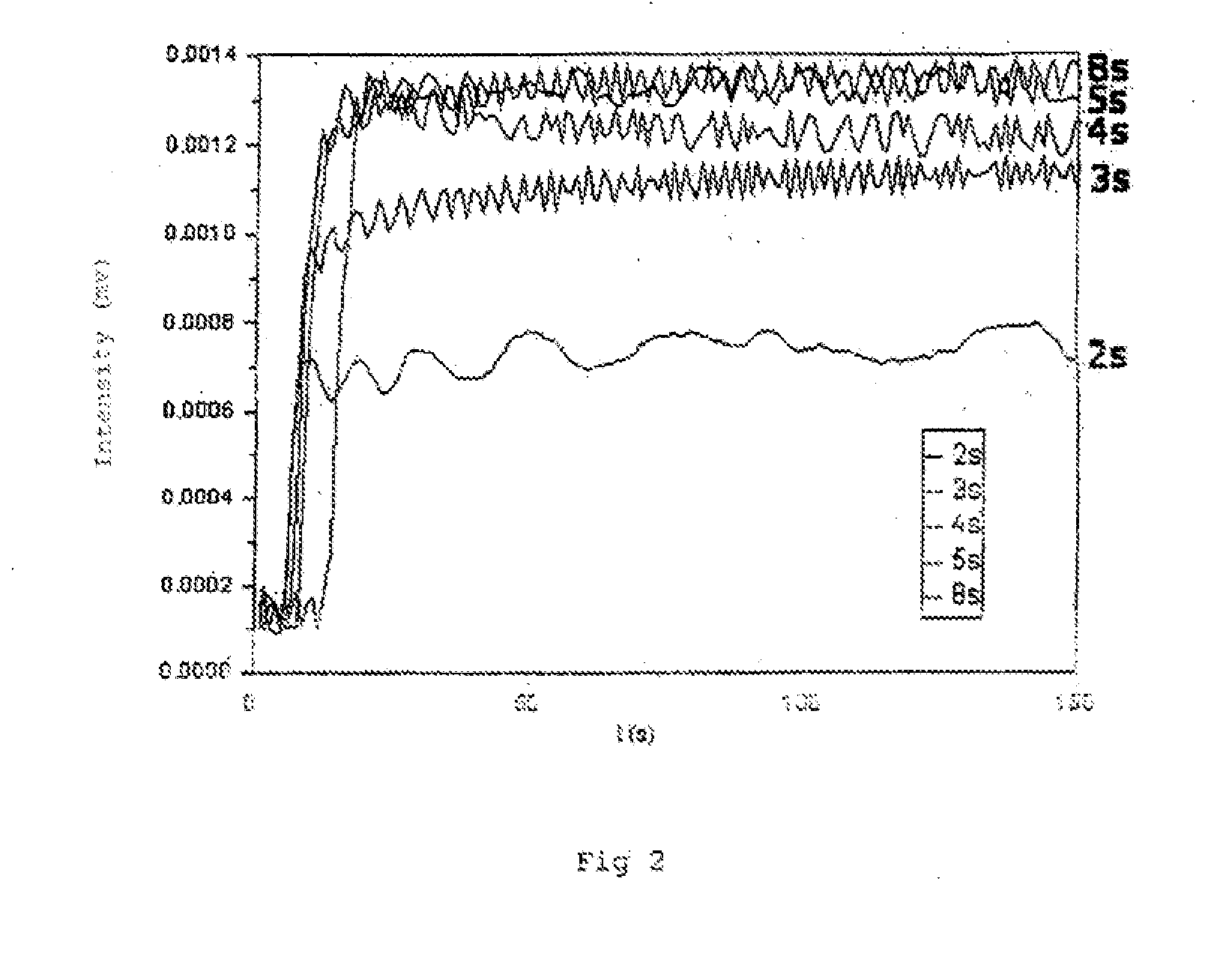Optical Elements with Gradient Structure
- Summary
- Abstract
- Description
- Claims
- Application Information
AI Technical Summary
Benefits of technology
Problems solved by technology
Method used
Image
Examples
Example
[0195]FIG. 3 shows an enlarged photograph of the diffraction grating from Example 2 taken using an optical microscope.
[0196]FIG. 4 shows a measurement of the angle dependence of the direct transmission of the diffuser of Examples 3-5 and Reference Examples 6 and 7 using polychromatic light. The improvement in the optical properties achieved by the process of the invention can clearly be seen.
LIST OF THE REFERENCES CITED
[0197]U.S. Pat. No. 5,552,261
[0198]U.S. Pat. No. 5,529,473
[0199]U.S. Pat. No. 3,658,526
[0200]U.S. Pat. No. 4,959,284
[0201]U.S. Pat. No. 4,942,112
[0202]U.S. Pat. No. 5,013,632
[0203]U.S. Pat. No. 5,098,803
[0204]U.S. Pat. No. 6,482,551
[0205]U.S. Pat. No. 5,453,340
[0206]US 2003 / 0157414
[0207]US 2005 / 0231773
[0208]U.S. Pat. No. 7,022,392
[0209]U.S. Pat. No. 6,969,578
[0210]U.S. Pat. No. 6,268,089
[0211]U.S. Pat. No. 7,163,769
[0212]US 2005 / 0101698
[0213]WO 03 / 058292
[0214]“Ionic Liquids in Synthesis”, P. Wasserscheid, T. Welton, Eds., Wiley-VCH, Weinheim, 2003.
[0215]P. Kubisa, J. ...
PUM
| Property | Measurement | Unit |
|---|---|---|
| Percent by mass | aaaaa | aaaaa |
| Percent by mass | aaaaa | aaaaa |
| Percent by mass | aaaaa | aaaaa |
Abstract
Description
Claims
Application Information
 Login to View More
Login to View More - R&D
- Intellectual Property
- Life Sciences
- Materials
- Tech Scout
- Unparalleled Data Quality
- Higher Quality Content
- 60% Fewer Hallucinations
Browse by: Latest US Patents, China's latest patents, Technical Efficacy Thesaurus, Application Domain, Technology Topic, Popular Technical Reports.
© 2025 PatSnap. All rights reserved.Legal|Privacy policy|Modern Slavery Act Transparency Statement|Sitemap|About US| Contact US: help@patsnap.com



